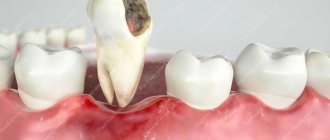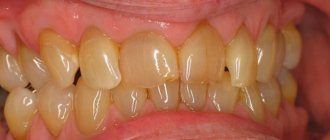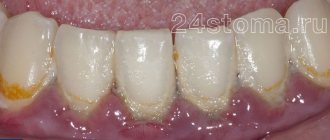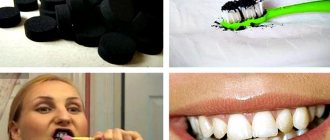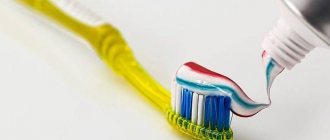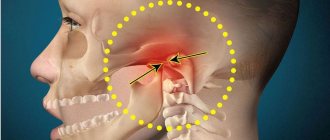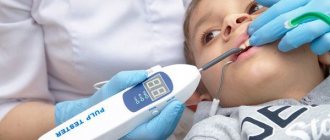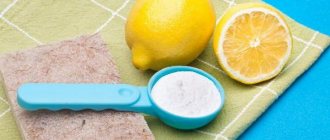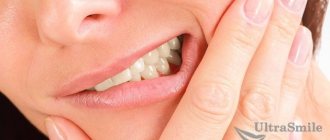Date of publication: 09.24.2018
Tooth extraction at home is a last resort measure that may only be required if it is not possible to visit a doctor. It is worth considering that the procedure is associated with difficulties and a real danger of complications. However, there are times when this is the only way to get rid of the pain caused by a bad tooth.
Tooth extraction may also be necessary if it is a baby tooth with a high degree of mobility. If it is very wobbly and this does not cause discomfort to the child, removal can be done at home.
Important note: it is possible to remove a molar tooth according to all the rules and without harm to health only in a medical institution with the participation of a specialist. Any independent actions by an unqualified person can lead to injuries and lead to dangerous complications. Removal requires not only knowledge and skills, but also special tools.
Why is it dangerous to leave a tooth root in the gum?
- The inflammatory process in it has not stopped, the danger of inflammation of the jaw tissue increases;
- Caries can spread to neighboring teeth;
- ENT diseases may develop.
The root of the damaged tooth must be removed. This is a complex procedure that requires the use of antibacterial drugs and anesthesia. It should be performed by an experienced doctor.
Removing tooth roots on your own is dangerous, as it is difficult to remove them completely. In addition, there is a high risk of infection of the hole.
You can solve this problem yourself only under certain conditions:
- The damaged tooth is very loose;
- It’s impossible to get to the dentist’s office, and the tooth hurts unbearably.
What risks exist:
- Inflammation may develop;
- The root can only be partially removed;
- Possible heavy bleeding.
Do not use the door handle for removal. Safe removal is possible only after systematic loosening.
To do this with minimal risk of tissue damage and infection, you need to follow a number of recommendations.
- Assess the situation - whether you can cope with the task. If the tooth is tightly fixed, is it worth starting extraction? A tooth that is tightly held cannot be removed.
- A loose tooth should be further loosened with the tongue. Perhaps it will fall out on its own.
- Before attempting to extract the root, wash the flour, brush your teeth with toothpaste, and rinse your mouth with a disinfectant (rinse) to ensure maximum disinfection. You can use special solutions. It is important that they contain alcohol.
- Use of painkillers. The painkiller should not cause side effects. For the drug to take effect, you must wait at least half an hour.
When is the best time to see a doctor?
Removing baby teeth at home only makes sense if there is significant mobility and no discomfort. If the tooth is firmly fixed, the gums are swollen or bleeding, this is a reason to visit a doctor as soon as possible. The specialist will assess the situation and decide on further actions. Improper removal can cause curvature of permanent teeth in the future, so you should not neglect medical help.
As for molars, removing them yourself is in any case undesirable. The specialist has all the means to carry out diagnostics and painless treatment. Many teeth that seem hopeless can be “saved” with proper action. It is worth removing a tooth yourself only in cases where the situation is critical and a visit to a doctor is impossible.
Procedure
- Grasp the tooth, cover it with a sterile bandage, and pull. Keep shaking it. You can use forceps, pliers, tweezers.
- Do not squeeze the tooth too hard to prevent it from cracking.
- From time to time, try to pull it firmly, but without jerking, so as not to break off part of the root and cause an inflammatory process.
- Act smoothly, rocking the tooth and periodically trying to pull it out. Jerking is unacceptable, as you can damage the gum or break the root. Then it is no longer possible to do without the help of a surgeon.
After successful extraction:
- Place a sterile swab on the hole for half an hour.
- Remove it without disturbing the formed clot.
- Do not eat for three hours.
- Monitor the condition of the gums in the injured area, rinse your mouth with vodka, potassium permanganate solution, hydrogen peroxide or other disinfectant.
- You can use a decoction of oak bark to speed up healing and reduce pain.
To remove a tooth root you need to prepare:
- Spitting container;
- Antiseptics;
- Pain reliever;
- Gauze Swabs and pads;
- Mirror.
These tips should not be resorted to if it is possible to turn to a professional, since root extraction is a rather serious and risky operation.
Important Tips
Home removal is not one of the procedures recommended by doctors, but if there is no other option and you can’t persuade your child to go to the dentist, use the following useful tips:
- Take your time.
Let the child himself try to push the loose element out of the jaw using his fingers and tongue. The baby understands his feelings better and does not hurt himself. Come to help if the child cannot cope on his own. - Before pulling out a tooth, prepare yourself psychologically and prepare your baby. Come up with a ritual for saying goodbye to your tooth. Give a toy for courage, do not forget to praise the brave man.
- A bandage for wrapping a finger or thread is disinfected with alcohol, iodine, and brilliant green.
- Before removing teeth, you need to brush them and rinse your mouth with Rotokan.
- For pain relief in case of severe discomfort, the gums and cheek are treated with a teething gel for infants with lidocaine and a crushed analgin tablet.
- Pull the tooth 30-40 minutes after eating.
- If blood appears on the gum, ask the child to spit it out, do not allow him to swallow.
- The bleeding will quickly stop, the gums will not swell if you apply a cold compress to your cheek, or even eat ice cream. Give your kids a teaspoon of sweets 10–15 minutes after the procedure.
- Replace unpleasant memories with positive emotions. Praise the child again, tell relatives about his courage during the removal of a canine or other tooth. Fear and fright on the wave of pleasant impressions and gifts will pass faster.
What do you need to know?
The procedures for removing baby and molar teeth are similar, but the latter are fixed in the tissues much more firmly and deeper. Before removal, make sure that the problem comes from this particular tooth. If there is blood during removal, you need to use tampons soaked in antiseptic.
After removal, you need to remove parts of the tooth and blood from your mouth, wash your hands, and apply cold to the injury site to reduce the risk of swelling. Over the next few days, you should stop smoking and avoid heavy physical activity.
You cannot pull a tooth out on your own without pain. This effect can only be achieved by professional pain relief. If the removal was successful, monitor the hole for a week. If suppuration or swelling appears, use an antiseptic and rush to the doctor. If, having started the removal, you cannot complete the process, there is severe pain, stop immediately and go to the hospital. Until this time, do not load the tooth or eat food.
The dentist must be informed:
- When the tooth was removed;
- When did the pain start?
- What means were used?
Types of anesthetics
Removal of a molar tooth with an injection involves several types of pain relief; the choice is made by the doctor, depending on the location of the molar, the degree of tissue destruction, the expected time of extraction and other factors:
- Applique. This type of anesthesia is used mainly if the patient is afraid of pain from the injection of an injectable anesthetic, as well as when tartar or baby teeth are removed from a child. A special gel or spray is applied to the gum area near the molar.
- Infiltration. This type of anesthesia involves two injections of a substance, from the side of the palate and the lip, the medicine is injected into the apex of the root through the gum. Freezing begins within two minutes after the injections and lasts for another hour after the end of the extraction procedure. Infiltration anesthesia is good because the patient does not feel pain, and there is no numbness in most of the face.
- Conductor. Such anesthesia is necessary when removing wisdom teeth and molars. An injection is made in the area of the trigeminal nerve, as a result of which the sensitivity of a large part of the face is blocked, and numbness persists after extraction for another 1.5–2 hours.
- Intraligamentary. The patient receives an injection into the periodontal fissure, it is carried out under more powerful pressure. The medicinal substance is located inside the bone tissue of the alveolar process, due to which the effect occurs instantly, but lasts about 30 minutes.
- Stem. This type of anesthesia involves serious maxillary surgical interventions; the branches of the maxillary and mandibular nerves are blocked. The injection is injected into the lower edge of the cheekbone, a pronounced freezing effect begins after 10 minutes.
- Sedation. With this type of anesthesia, the patient is depressed or asleep (with deep sedation). The superficial type of such anesthesia allows a person to respond to the doctor’s voice and follow his commands, swallow saliva, open his mouth, while the patient is relaxed and does not feel any discomfort. The medicine is administered through a mask or injected into a vein.
In especially severe cases, when extensive surgery is required, the patient is allergic to other types of anesthesia, or is simply panicky about the extraction procedure, doctors use general anesthesia. However, this method is used extremely rarely, since general anesthesia requires intervention in a hospital setting and under the strict supervision of an anesthesiologist.
At the same time, the medicine remains sterile, it does not need to be opened, and it does not come into contact with air when drawn into a syringe. The thinnest needle ensures minimal discomfort when administering the drug. The following modern anesthetics are used for extraction:
- Articaine is an anesthetic drug that is used in conduction and infiltration anesthesia, when it is necessary to remove several molars in a row;
- Scandonest is a drug contraindicated in adolescents under 15 years of age and elderly patients, as well as people with diabetes, kidney, liver and heart diseases;
- Septanset is a medicine that contains an anesthetic and adrenaline, it is used for the removal of molars, long-term treatment and when cleaning the roots of teeth.
Modern drugs rarely cause allergies, but if a person has a predisposition, he should definitely notify the dentist about this in order to avoid unforeseen situations.
Expert opinion
Emir Romanovich Omerelli
Maxillofacial surgeon, implantologist
Experience: more than 13 years
It is impossible to remove a tooth root at home. This is a very dangerous and traumatic procedure that can lead to serious negative consequences - from damage to the oral cavity and injury to healthy teeth, to purulent processes in the socket, inflammation of bone tissue and even sepsis. The entire tooth or any part of it, including the root, must be removed by the dentist under sterile conditions, using anesthesia and special instruments.
Oral care after lower tooth extraction
Upon completion of the dental intervention, the doctor gives the patient recommendations on how to behave so that the recovery is successful and in the shortest possible time. Necessary:
- Do not eat anything for the first two to three hours after treatment. It is important that a clot forms in the hole, which will protect it from the penetration of bacteria.
- Do not touch the wound with your tongue or foreign objects.
- Do not use paste or brush on the day of the procedure.
- Rinse your mouth only if prescribed by your doctor.
- Visit the doctor on the appointed day for a follow-up examination.
It is important to understand that dental operations today are only vaguely reminiscent of those performed a couple of decades ago. They are as gentle as possible and are not associated with pain and long-term rehabilitation.
Wisdom teeth extraction
You can remove a wisdom tooth if you can loosen it and grab it tightly with your fingers. Place a cotton swab in front of the cheek on the area of the problem tooth. These teeth have long roots, making it almost impossible to remove them yourself. Tooth extraction requires a careful approach, but it is equally important to avoid future infection.
For this:
- Provide the empty hole with maximum peace;
- Brush your teeth, but be careful not to wash away the clot that has formed;
- To improve blood circulation in the injured area, apply warm, damp compresses to the gums;
- Rinse your mouth after every meal;
- Stick to a diet - hot and cold foods should be excluded;
- Use painkillers only when absolutely necessary, avoiding overdose.
Possible consequences
By performing a tooth extraction procedure on your own, you are putting your health at risk. You may encounter the following problems:
- Damage and destruction of nearby teeth.
- Damage to the gums leading to inflammation.
- There is a risk of not completely removing the tooth, which will lead to inflammation and decay.
- Incorrect or careless wound treatment leading to infections.
Improperly performing a tooth extraction procedure can lead to serious complications requiring immediate surgical intervention.
Prepare thoroughly for the procedure and pay special attention to your oral health after extraction to avoid additional dental problems.
How do you get a fragment?
As soon as the patient visits the dentist, the doctor will carefully examine the hole and send it for a diagnostic study (x-ray). If the cause of discomfort is an abandoned fragment, the further algorithm of actions is as follows:
- Introduction of an anesthetic.
- If the fragment is visible visually, the doctor will simply remove it using special forceps.
- If the fragment is stuck deep, it will be necessary to excise the mucous membrane, and only then remove the rest of the tooth.
- Next, a thorough antiseptic treatment is performed. If the incision is deep, sutures may be performed.
Price
The total cost of removing the left fragment from the hole consists of the price for the following manipulations:
- radiography (orthopantomography or visiography) - about 1 thousand rubles;
- anesthesia - up to 500 rubles;
- hole cleaning - about 800 rub.
Several other factors influence the final cost: the complexity of the manipulation, scheduling subsequent treatment of the complication, the pricing policy of the clinic, its status and location, and the qualifications of the specialist.
